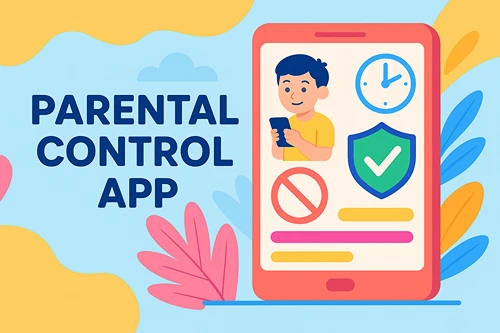What Symptoms and Signs Are Associated with School Refusal?
Does your child dread going to school in the mornings? The occasional case of “not feeling well” might be understandable. But persistent school avoidance can signal a deeper issue known as school refusal behavior. And your child isn’t alone in this battle. A significant number of children actually exhibit school refusal.
A 2019 study in the United States found that around 6% of students reported avoiding school activities, classes, or specific areas within the school environment. Early identification and intervention are crucial for addressing school refusal effectively through professional help. (1)
Discover below the key school refusal symptoms and signs that can help you recognize if your child might be struggling with this issue.
Emotional and Behavioral Signs
Here are the emotional and behavioral signs associated with refusal:
Anxiety and Fear
The school environment itself can trigger intense anxiety disorders and fear. In fact, 9.4% of children from ages 3-17 had anxiety disorder in 2016-2019. It can manifest in various ways. It can begin at home before the school day even starts. (2)
Separation Anxiety
Saying goodbye to parents or caregivers in the morning might be a major hurdle, too. Your child may cling to you tightly, cry excessively, or even throw tantrums at the prospect of being left behind.
Clingy Behavior
This anxiety can extend throughout the day. Evenings and weekends might find your child glued to your side, seeking constant reassurance and physical closeness.
Excessive Worry and Nervousness
School-related topics can become a source of constant worry as well. They might express excessive fear about tests, presentations, or social interactions with classmates. Everyday conversations might be dominated by negative thoughts about upcoming school events.
Panic Attacks or Meltdowns
In severe cases, the fear of attending school can culminate in panic attacks or meltdowns. These episodes may involve physical symptoms like rapid heartbeat, shortness of breath, and dizziness, accompanied by intense emotional distress.
Depression and Low Mood
While anxiety often takes center stage in school refusal, it’s important to recognize the potential presence of underlying depression. A 2021 report estimates it’s occurring in 1.1% of adolescents from ages 10-14. (3)
Children struggling with depression may exhibit a range of emotional and behavioral changes that extend beyond school-related anxieties. That’s why seeking the help of a mental health professional from a reputable behavioral health care center is crucial.
Shifts in Sleep and Appetite
Noticeable changes in sleep patterns can be the first red flag. Your child might have difficulty falling asleep at night or experience excessive sleepiness during the day. Similarly, a loss of appetite or changes in eating habits can be signs of depression.
Loss of Interest in Activities
Activities that once brought your child joy may suddenly seem uninteresting, too. It could involve hobbies, sports, or social interactions with friends that they previously enjoyed.
Difficulty Concentrating and Feelings of Hopelessness
Schoolwork can become a major challenge as well due to problems with focus and concentration. They might express feelings of helplessness or hopelessness, making it difficult to see a way out of their situation.
Social Withdrawal
Depression often leads to social withdrawal. Your child might isolate themselves in their room, avoid spending time with friends, and generally seem withdrawn from social interactions.
Social Anxiety or Shyness
For some children, school refusal stems from a fear of social situations and interactions with peers. A social anxiety disorder, or shyness taken to an extreme, can make the school environment feel overwhelming.
Fear of Judgment and Bullying
Children with social anxiety may be particularly worried about being judged or bullied by classmates. This fear can make them avoid group activities, lunch periods, or even specific classes where social interaction is expected.
Difficulty Participating in Class
The prospect of school attendance and participating in class discussions, giving presentations, or working in groups can trigger significant anxiety. They might become withdrawn in class, avoid making eye contact with the teacher or classmates, and struggle to participate actively.
Craving Solitude
Social situations often drain their emotional energy, too. Your child might crave solitude and avoid activities that involve interacting with others, preferring to spend time alone during breaks or after school.
School refusal can manifest not only in emotional and behavioral ways, but also through physical symptoms. Continue reading to learn more about them.
Physical Symptoms
These are often referred to as psychosomatic complaints, where emotional distress presents itself through physical ailments.
Headaches, stomachaches, nausea, and fatigue are common complaints among children struggling with school refusal. Interestingly, these symptoms tend to improve significantly when they’re allowed to stay home from school. This pattern can be a clear indicator that the physical discomfort is linked to anxiety or fear surrounding the school environment.
Recognizing the Signs: A Call to Action
School refusal can be a complex issue, but by recognizing the key symptoms and signs, parents and caregivers can take the first step toward helping their children.
If you recognize any of the signs above in your child, remember that you’re not alone. School refusal is a treatable condition, but it’s important to seek professional evaluation and support. A therapist or counselor can help identify any underlying causes and develop therapy and counseling strategies to manage anxiety, improve coping skills, and ultimately get your child back on track for a successful school experience.
References:
1. Students’ Reports of Avoiding School Activities or Classes or Specific Places in School”, Source: https://nces.ed.gov/programs/coe/indicator/a17/student-school-avoidance?tid=200
2. “Anxiety and depression in children: Get the facts”, Source: https://www.cdc.gov/childrensmentalhealth/features/anxiety-depression-children.html
3. “Mental health of adolescents”, Source: https://www.who.int/news-room/fact-sheets/detail/adolescent-mental-health






